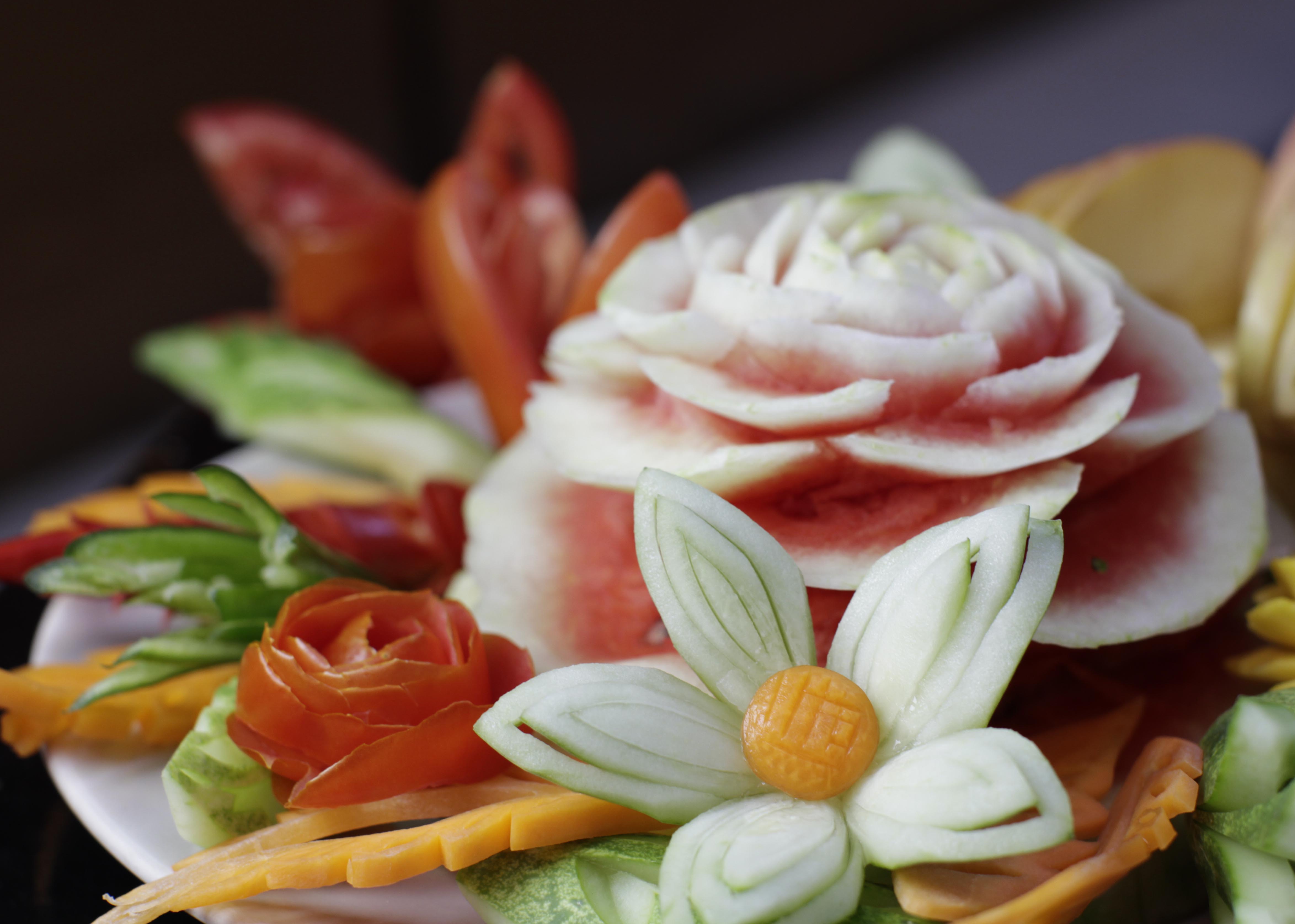
We can provide custom designs in addition to a selection of carving examples we showcase. Please let us know how we can help enhance your next event with a Thai fruit carving or vegetable carving.
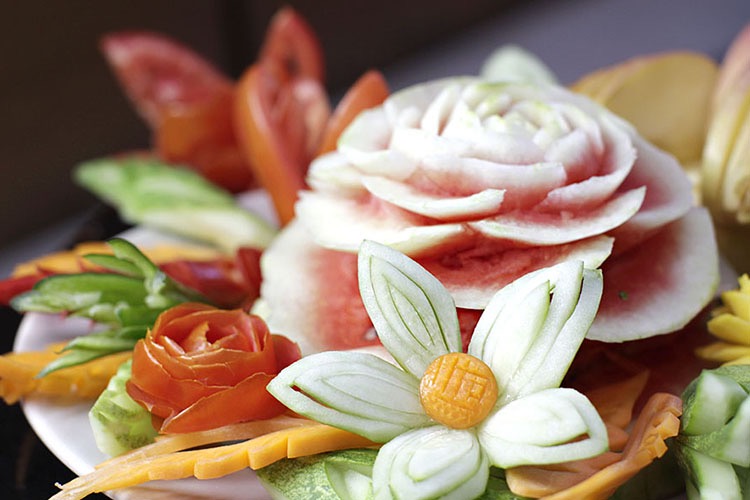
Our typical floral designs include tomato roses, watermelon carnations, zucchini buttercups, bell pepper lilies, carrot leaves and cucumber leaves.
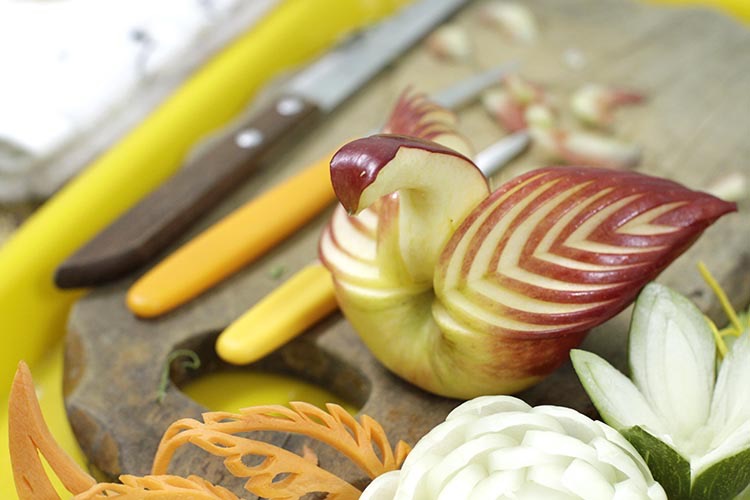
We carve several differnt type of animal designs including apple swans, melon peacocks, pumpkin goldfish, watermelon koi fish and jicama doves.
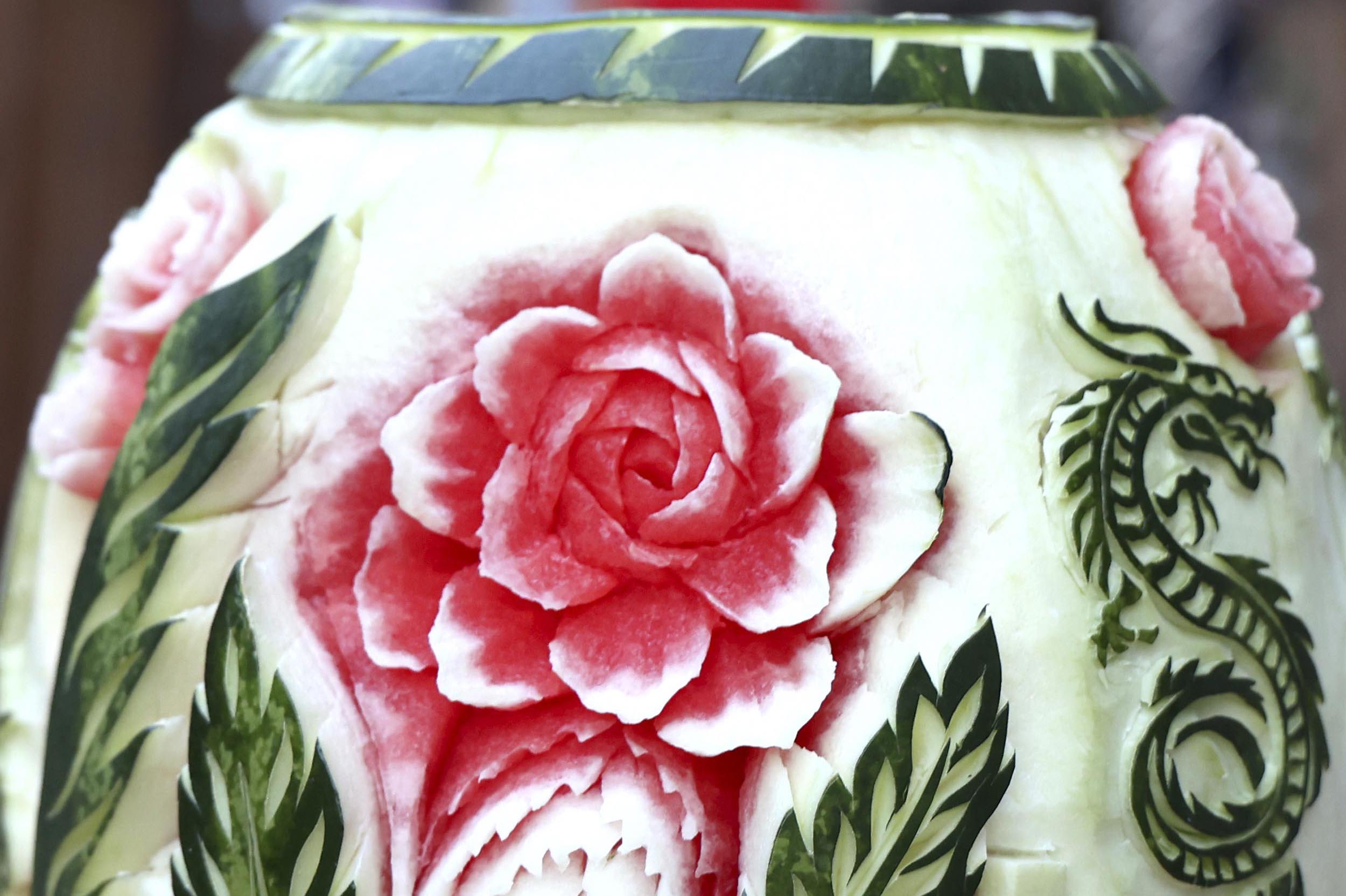
We can provide custom fruit carvings based on your specific requirements, and will work closely with you to ensure the design meets your vision.
Please contact us at veginfo@maykaidee.com for more information about our fruit carving and vegetable carving.
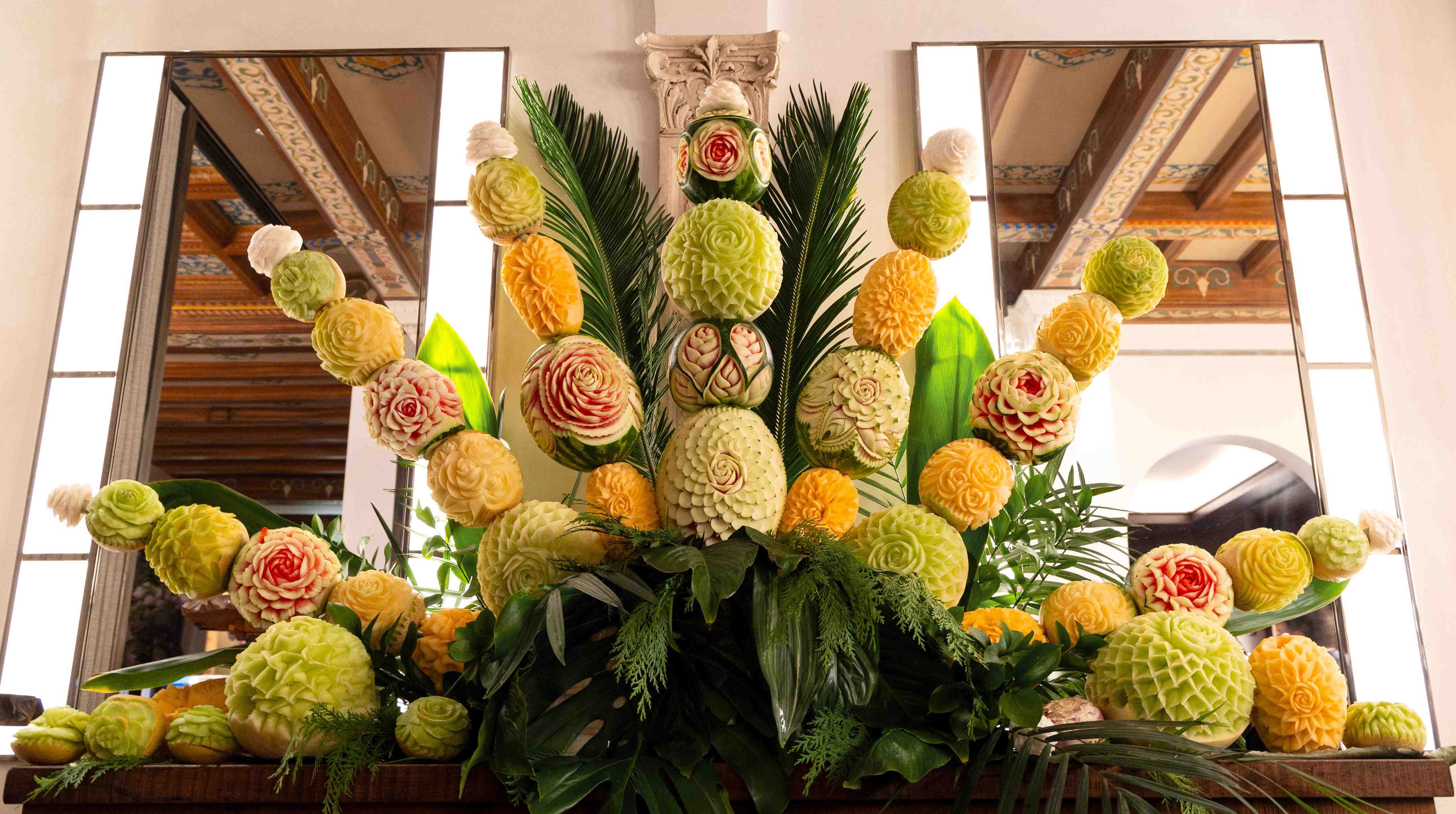
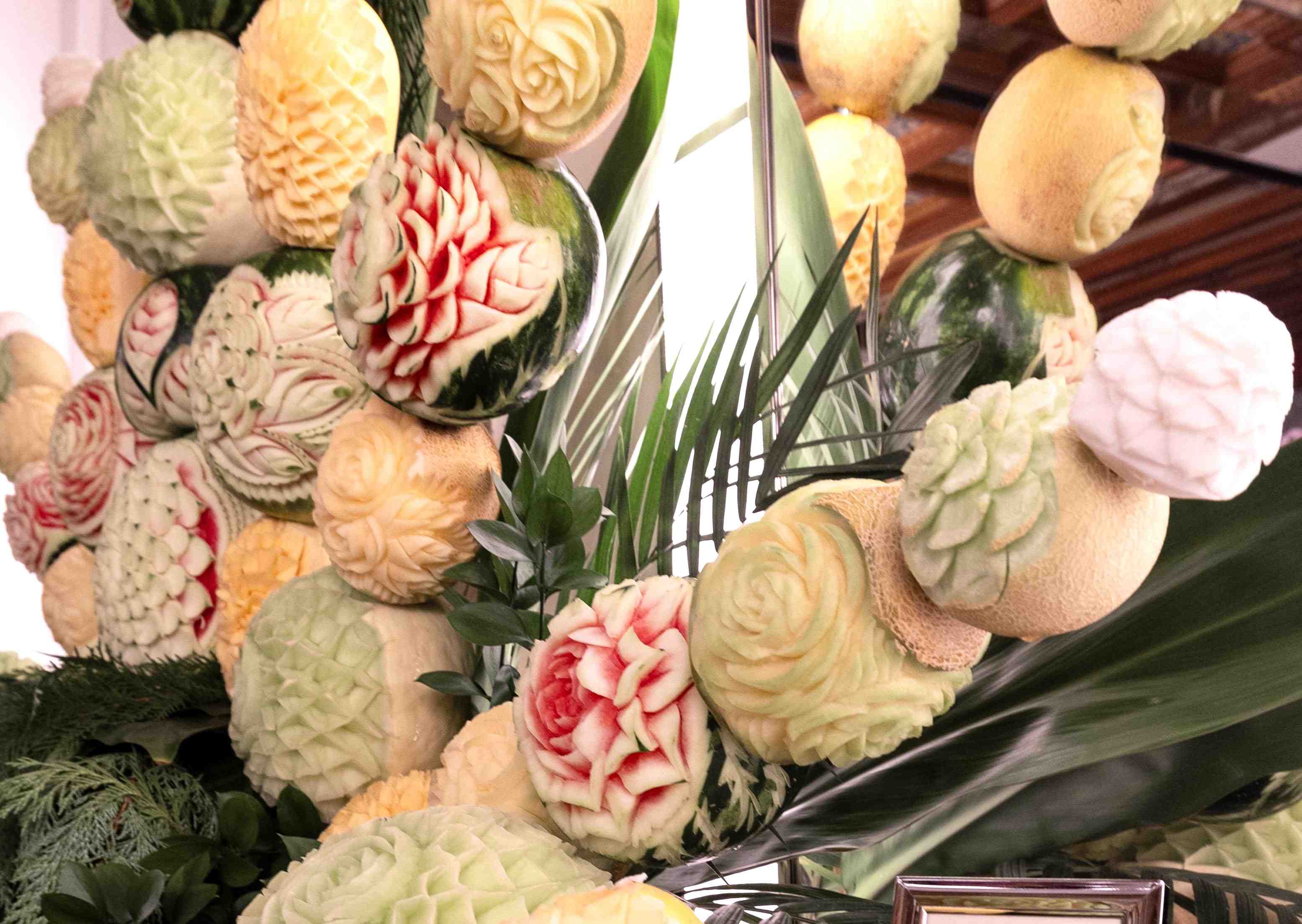
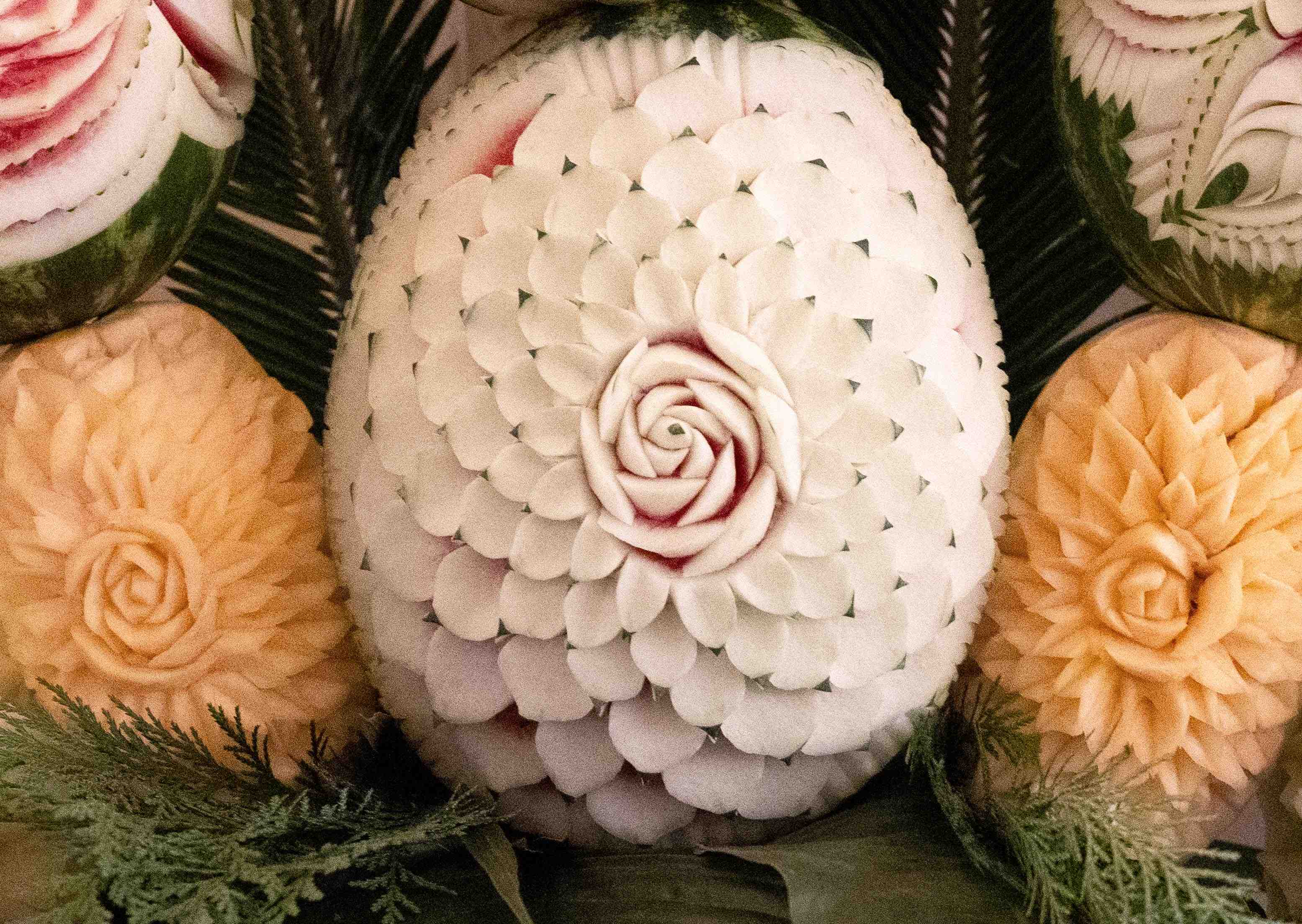
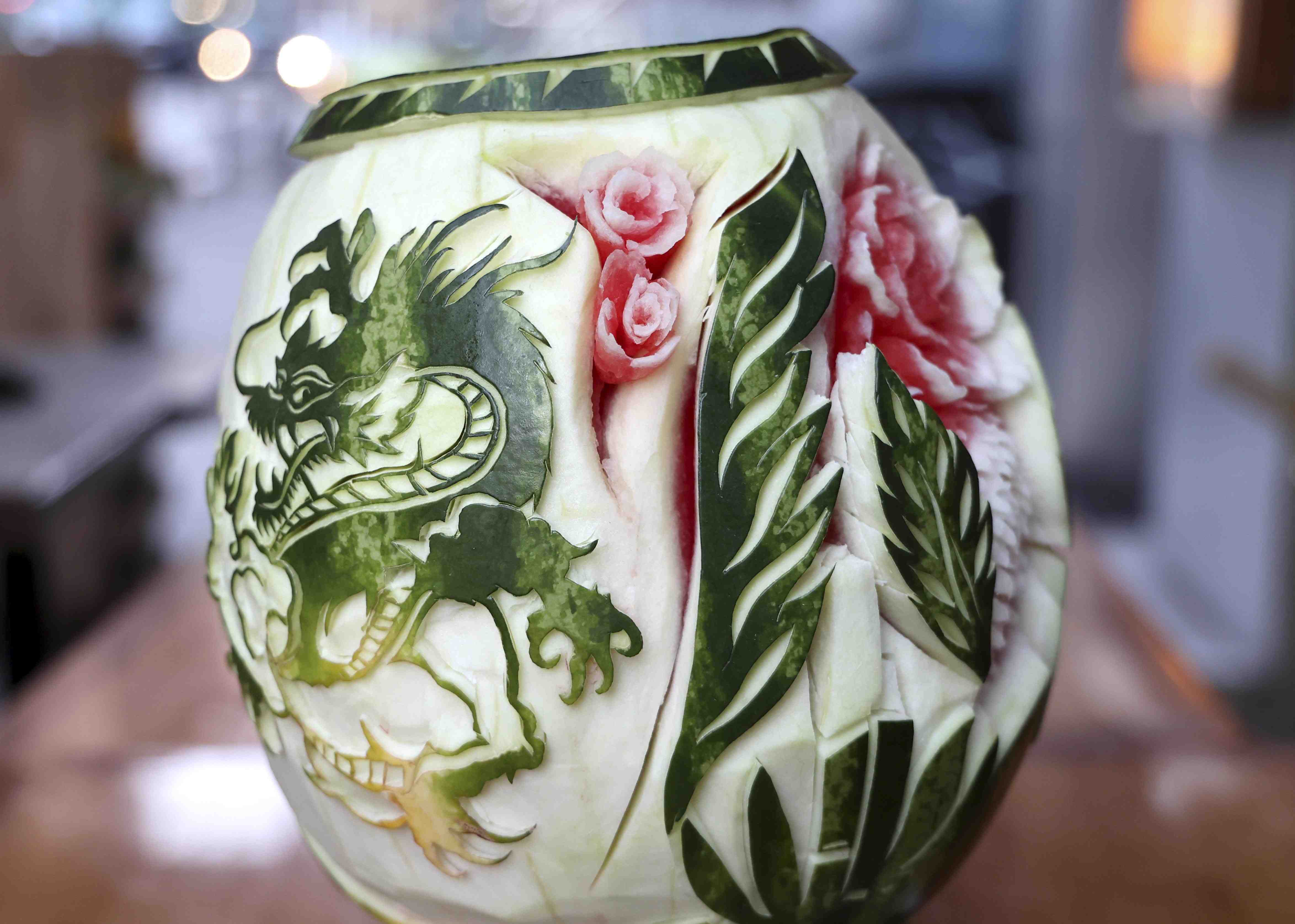
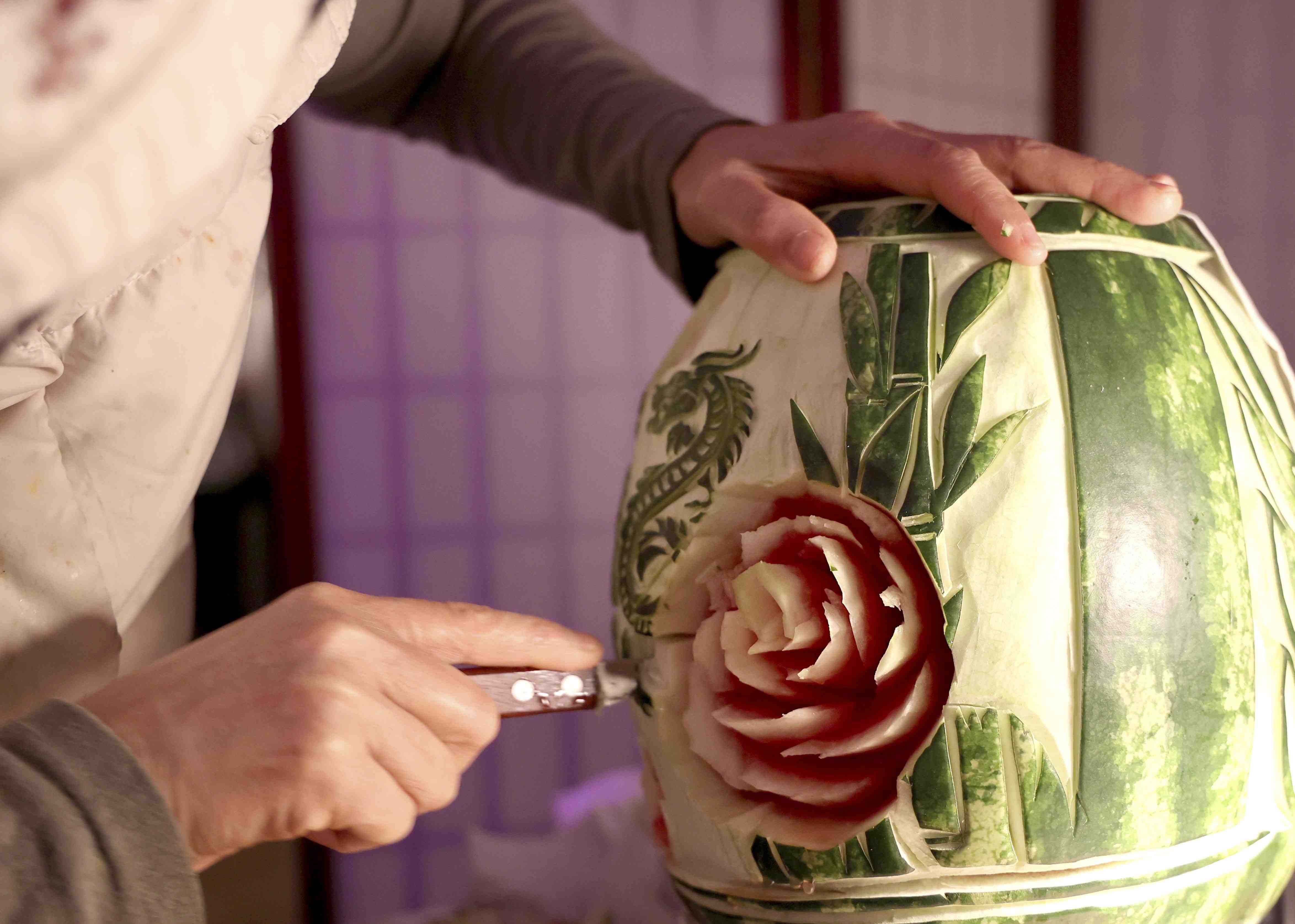
Fruit carving has been around for centuries, with evidence of the practice dating back to ancient civilizations such as Egypt, China, and India. Initially used as a form of decoration for religious and ceremonial events, fruit carving became a popular form of art during the Renaissance period. It was during this time that the art form evolved to include intricate and detailed designs that were used to decorate tables at grand feasts and events.
However strong evidence suggests that the documented history of modern fruit carving originated in Thailand during the 14th century known as the Sukhothai period.
The techniques used in Thai fruit carving vary depending on the desired effect. The most common technique involves using a small, sharp knife to create intricate designs in the pulp of the fruit or vegetable. Other techniques include using a melon baller to scoop out small balls of fruit or a cookie cutter to create shapes. The use of vegetable and fruit carving tools, including special knives, are essential to creating authentic Thai carvings.
The approach to decorative carving of fruit and vegetables is one of precision and patience. It requires a steady hand and a keen eye for detail. Carvers must have a thorough understanding of the texture, color, and shape of the fruit or vegetable they are working with in order to create the desired effect. Designs can range from simple and elegant to intricate and complex, with some carvers creating entire scenes or objects out of multiple fruits and vegetables.
In recent years, fruit carving has become a popular hobby and is often used in food presentation for special events, such as weddings and banquets. With the rise of social media, fruit carving has also become a way for people to showcase their creativity and share their designs with others. There are now many resources available for those interested in learning the art of fruit carving, including instructional videos and online courses. At May Kaidee we teach in-person fruit carving classes at our NYC location, in addition to providing professional carving services.
Overall, fruit carving is a beautiful and intricate art form that has been practiced for centuries. With its many techniques and approaches, fruit carving continues to evolve and inspire artists and hobbyists alike. Whether used for decoration or personal enjoyment, the art of fruit carving is a testament to the beauty and creativity of the natural world.

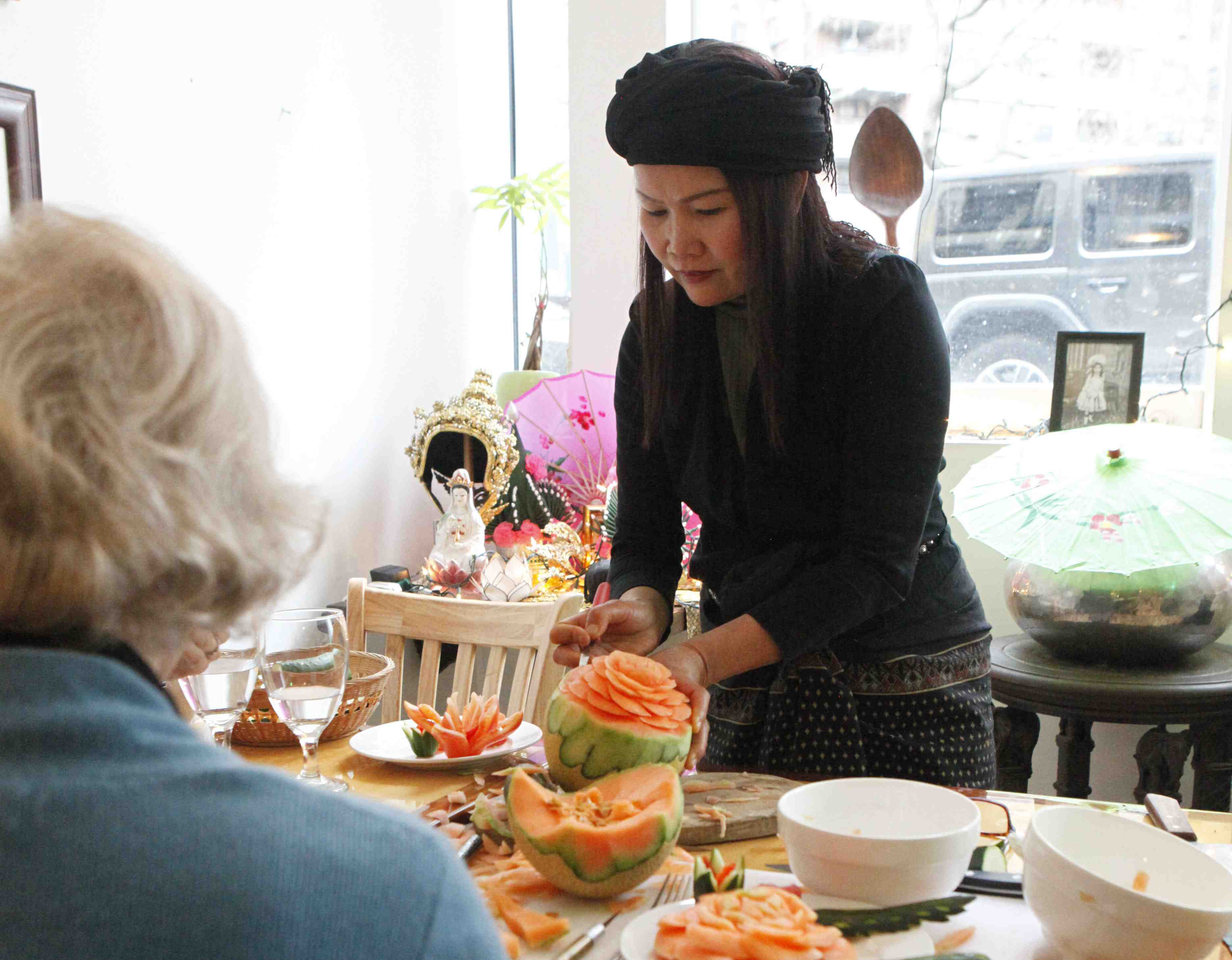
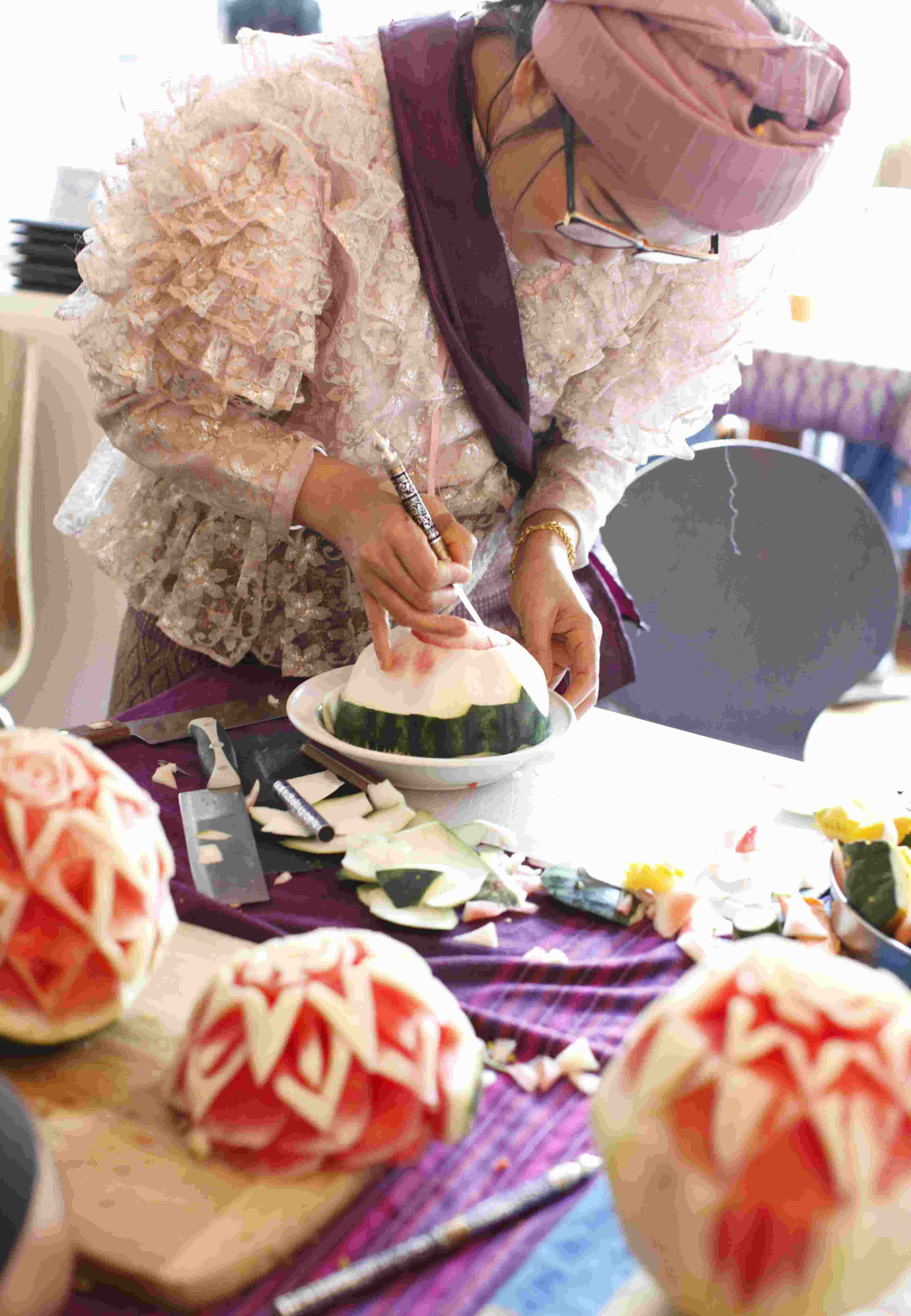
In addition to offering fruit and vegetable carving services, we also teach classes. It's our pleasure to pass along the techniques we use in our carving to all those with a sincere interest in this unique aspect of the culinary arts.
Whether you are experienced with carving or have never tried fruit carving before, we're sure you will have a great time at one of our fruit caving classes. We teach classes every day and our classes are suitable for beginners with no prior experience. We look forward to seeing you.
We offer custom fruit carving services including all types of work from the most basic to highly complex carvings involving many pieces of fruits and vegetables, taking a team of several people to complete. No matter what size of your project we have the capabilities to complete the job.
Let us know about your upcoming project by sending us an e-mail at veginfo@maykaidee.com. Be sure to include a detailed subject line for the fastest possible response.
Though not formally part of Japanese chef training or other Asian culinary education, the art of fruit carving is an applicable complement to culinary training of many different cuisines both inside and outside of Asia.
Our team can tailor instruction for students of any skill level and experience. If it's your first time trying fruit carving or have little experience with carving in general, our instructors will step you through specific designs perfect for beginners. Likewise, if you have already mastered a certain level of proficiency in fruit carving, we will begin by teaching you highly complex designs that meet the level of challenge you require.